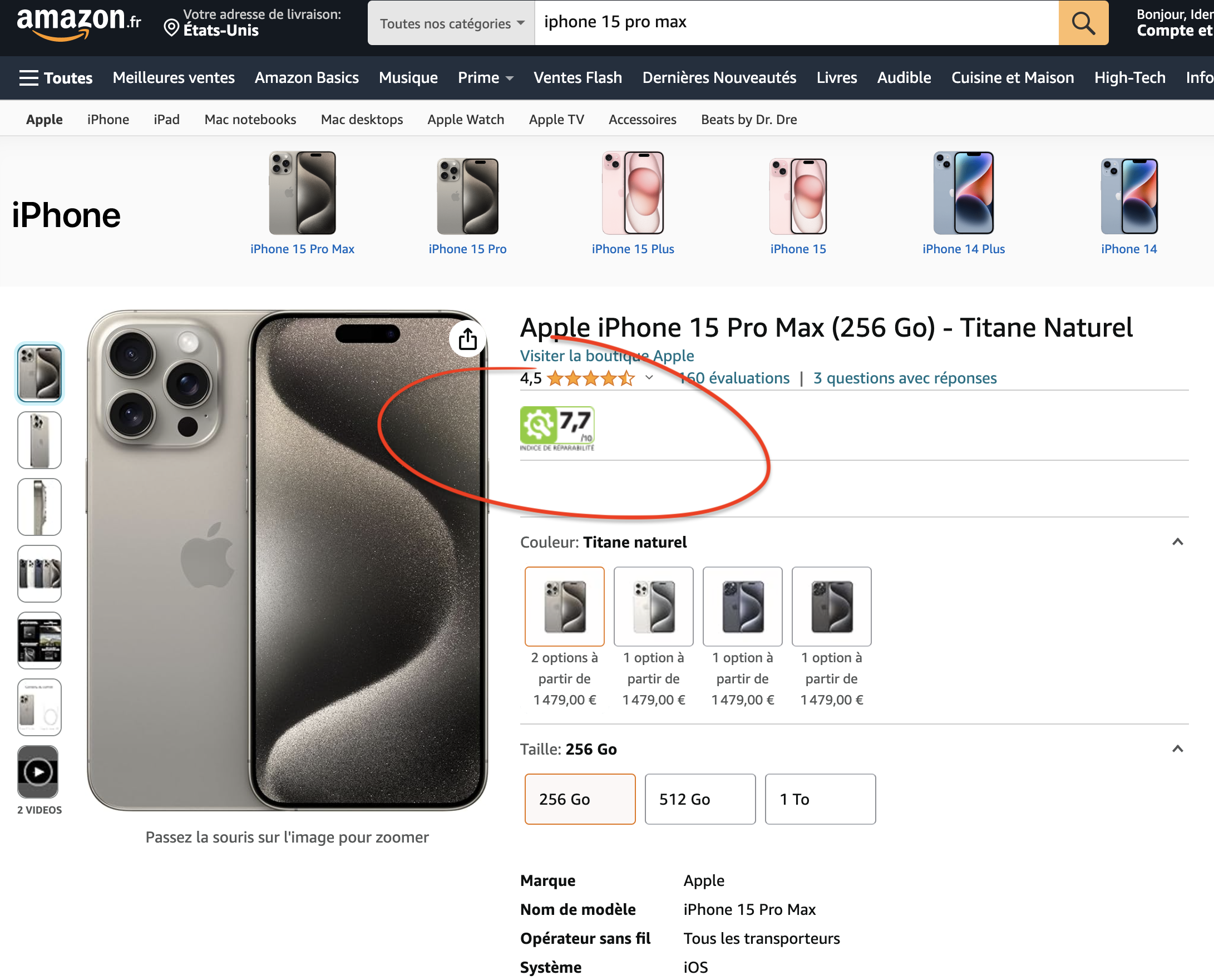
Tell Amazon: We need repair scores
We need Amazon to display a repair score from 0 to 10, which tells us how fixable a product is.
Earlier this month, the Oregon legislature held a series of hearings on issues that will be discussed in the upcoming legislative session in February. Our top priority in the session is passing the Right to Repair Act, which would make it easier for consumers to get their electronic devices fixed instead of having to discard them and buy a new one
Earlier this month, the Oregon legislature held a series of hearings on issues that will be discussed in the upcoming legislative session in February. Our top priority in the session is passing the Right to Repair Act, which would make it easier for consumers to get their electronic devices fixed instead of having to discard them and buy a new one. Keeping electronics going longer would reduce useless electronic waste, give consumers more control power over the things we’ve already bought, and save Oregon households a total of $649 million every year.
On January 11th, the Senate Interim Committee on Energy and Environment held a hearing to discuss the issue. If you’re interested, you can watch it here. The committee, chaired by the bill’s primary proponent State Senator Janeen Sollman, heard from three speakers: Charlie Fisher, OSPIRG’s state director, Kyle Weins, CEO and co-founder of the device repair website, and Steven Nickel, Director of Consumer Hardware Operations at Google.
The biggest news of the day was Google’s announcement of its support for the bill. In his testimony Steven Nickel said, “It provides a victory for consumers who want affordable repair options, for the environment in its emphasis on sustainability, and for companies that believe repairability truly matters to us all.”
One of the main strengths of Oregon’s bill in particular is that it addresses “parts pairing”, a feature of many devices that essentially stops consumers and repair shops from being able to fix devices on our own. Most electronic parts are serialized, meaning that they have an identifying number unique to the part’s original device, allowing repair technicians and manufacturers to trace each part back to its origin. On its own, serialization isn’t necessarily bad. However, some companies take it a step further with parts pairing, a practice that causes those serialized parts to only work with their original device. For example, if you had two otherwise identical phones, you wouldn’t be able to switch the screens on them while keeping all functionality (face recognition, automatic brightness adjustment, etc.).
Lauren Greenlee from IFixIt describes another downside of parts pairing: “Harvesting spare parts from defunct devices for use in other, salvageable devices is an integral part of the repair landscape—one that is endangered by the growing prevalence of parts pairing.
Overall, we are incredibly excited about the future of this bill and have high hopes that it will pass in the upcoming legislative session. With the legislature convening next week, we have 35 days to get this bill over finish line and give Oregonians the Right to Repair.
We need Amazon to display a repair score from 0 to 10, which tells us how fixable a product is.
Add your name.